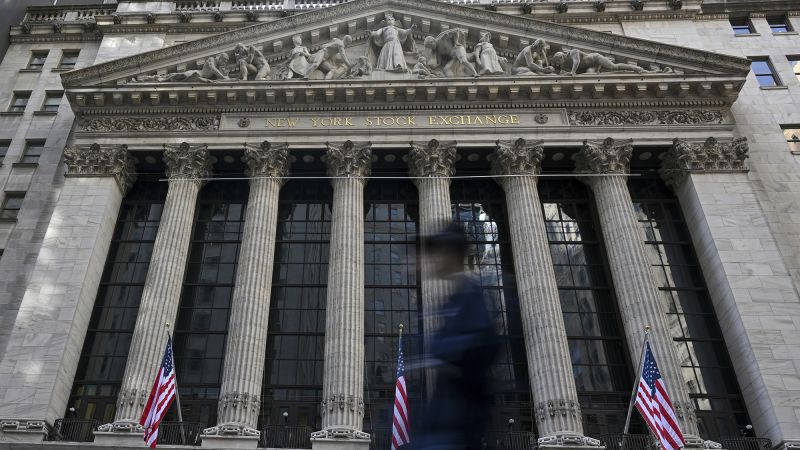Global financial markets are experiencing significant turbulence, driven largely by President Donald Trump’s assertive trade policies. Despite his claims of ushering in a “new golden age for America,” the longstanding allure of investing in the United States is beginning to fade, as analysts warn of a shift away from US assets.
The Impact of Tariffs on US Investment
Trump’s implementation of tariffs has marked a pivotal moment, signaling the decline of the era of US exceptionalism. This shift has raised questions regarding the attractiveness of American markets, which have historically been viewed as the premier destination for investors seeking robust returns. Many CEOs have downgraded their forecasts, and Wall Street institutions are adjusting their year-end expectations for the S&P 500.
According to a recent survey from Bank of America, a record number of global investors—73%—indicate plans to reduce their US stock holdings. This survey marks the most significant drop in confidence since data collection began in 2001. “US exceptionalism appears to have peaked,” said Arun Sai, a senior strategist at Pictet Asset Management.
Global Market Dynamics Shift
Historically, the US stock market, particularly the S&P 500, has been recognized as the gold standard, consistently outperforming European and Asian markets for over 15 years. However, the index has declined by 10% this year, heading for its worst month since 2022. Investors are acutely aware that the financial landscape has shifted dramatically since last year when the index surged by 23%.
Three key developments have redirected investor attention from the US to international markets, according to Alessio de Longis, head of investment solutions at Invesco:
- Emergence of AI: In January, the launch of DeepSeek, a low-cost AI model, surprised the tech world, challenging the US’s narrative of dominance in artificial intelligence.
- Increased European Defense Spending: A shift in US foreign policy concerning Ukraine in February led to a surge in defense investments in Germany, enhancing its economic prospects.
- Unpredictable Tariff Strategies: Trump’s erratic tariff announcements in March and April have further prompted investors to reconsider their US asset allocations.
“The unpredictable communication surrounding tariffs served as another reason for US underperformance,” said de Longis. His investment focus has shifted to a more balanced approach between US and European stocks in recent months.
Changing Investor Sentiment
The American Association of Individual Investors recently reported that over 50% of respondents have expressed bearish sentiments regarding the US stock market for eight consecutive weeks. Investment strategist Jason Blackwell noted that it has been 15 years since he last received inquiries about increasing allocations to international stocks. “There is renewed interest in international markets,” he explained.
The interplay of AI advancements, growing opportunities in Europe, and the ongoing tariff conflicts has led investors to reevaluate their strategies and diversify their portfolios.
Economic Indicators Point to Change
As the year began, the US accounted for approximately 25% of global GDP and 65% of the total stock market value, according to Barclays. Ajay Rajadhyaksha, an analyst at Barclays, commented, “For nearly two decades, the US attracted consistent investments in USD-denominated assets. Perhaps we were due for some adjustments, with alternative opportunities emerging elsewhere.”
Rajadhyaksha also highlighted significant technological advancements in China, referencing breakthroughs from companies like Huawei and BYD, which are challenging the US’s position in the tech sector.
Investor Confidence Wanes
Recent findings from Bank of America’s fund manager survey indicated that 49% of respondents now believe the global economy is heading toward a “hard landing,” a stark rise from 11% just a month earlier. The price of gold has surged nearly 27% this year, reflecting a flight to safe-haven assets, as it became the most sought-after investment in April.
Meanwhile, the US dollar has weakened significantly, indicating a potential decline in investor confidence. The dollar index recently recorded its worst week since 2022, while the Euro reached its highest value against the dollar in over three years.
Conclusion: A New Era for Global Investment
Goldman Sachs analysts noted that diminishing profit margins for US firms, exacerbated by tariffs, could undermine the foundations of the strong dollar. Krishna Guha, vice chairman at Evercore ISI, suggested that recent market reactions reflect a growing skepticism toward Trump’s economic policies.
The Trump administration’s push for domestic manufacturing could reshape the global economic landscape, creating a ripple effect that diminishes inflows into US assets. While the US stock market remains a viable long-term investment option, many investors are now strategically looking to international markets for growth opportunities. JP Morgan has projected a 60% chance of a global recession this year, urging European investors to reassess their allocations to US stocks. The S&P 500 may no longer hold its status as the singular preferred investment choice.











